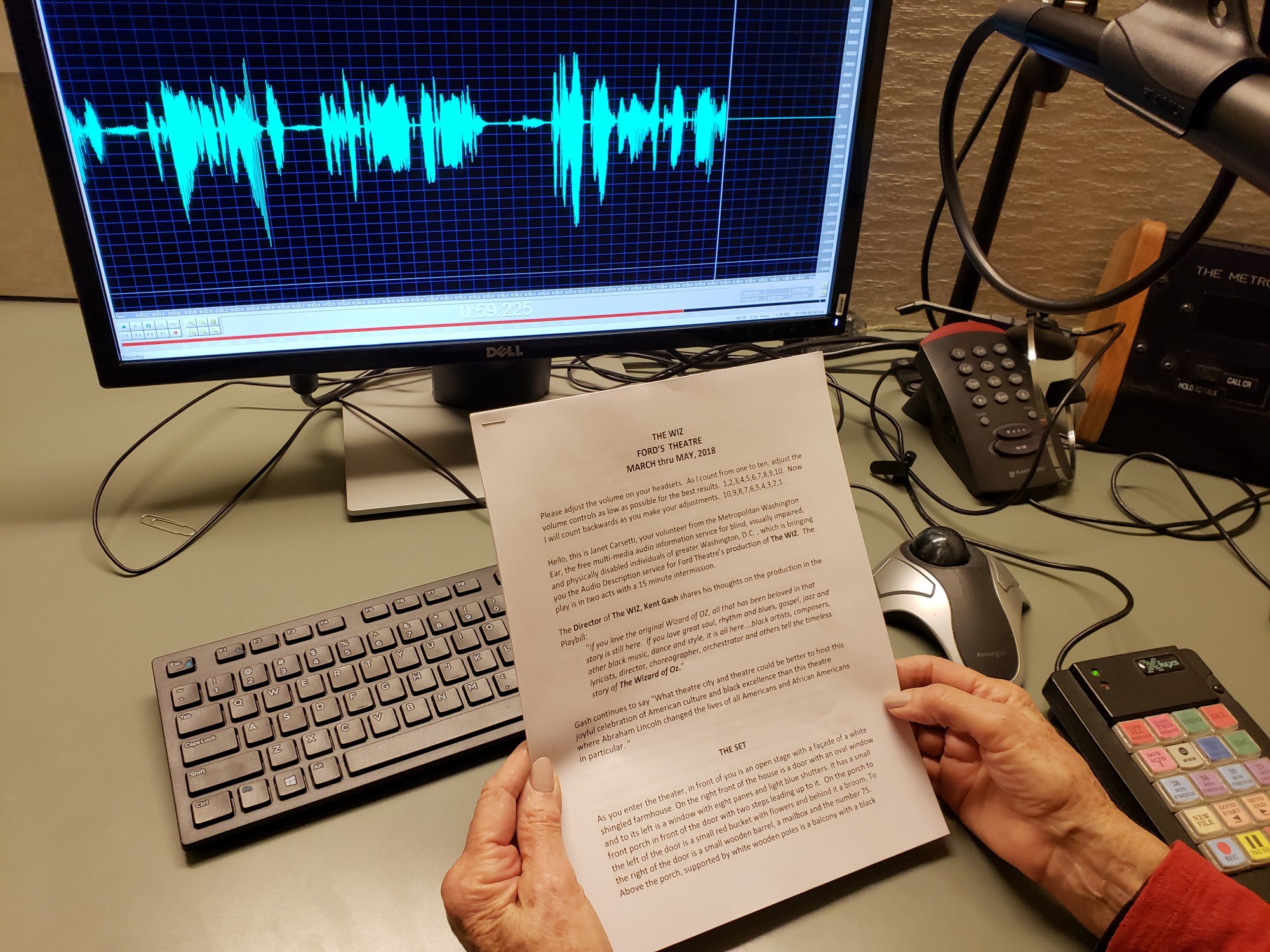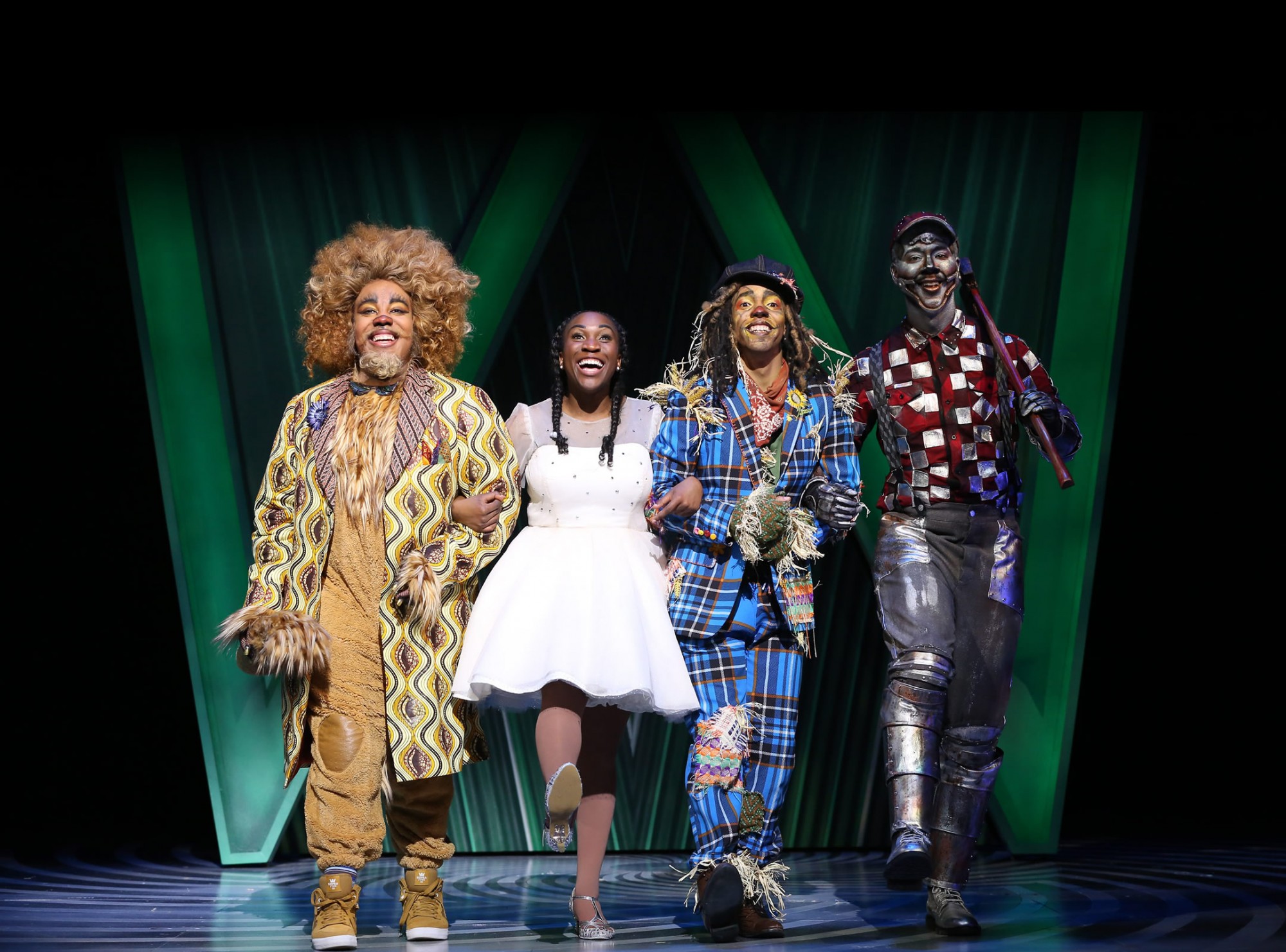
Increasing Access: What are Audio Description Services at Ford’s Theatre?
Ford’s Theatre offers a variety of accessibility services for persons with low vision or blindness, including braille programs and audio description for theatrical performances (view this season dates here). We recently spoke with Janet Carsetti and Bob Coley, two longtime Ford’s describers from Metropolitan Washington Ear about the assistance Audio Description provides and what patrons can expect at those performances.
What is audio description and what value does it provide individuals?
Bob Coley: Audio description, as it applies to the theatre, describes in words what theatregoers with visual impairment cannot see. The set of the play, the appearance and costumes of the actors and the physical action that takes place during the play may not otherwise be clear to them.
Janet Carsetti: It is a means for visually limited theatregoers to hear descriptions of the characters, costumes, set design and on-going visual action and body clues that they are unable to “see.”

Bob Coley: And, we describe what happens in the theatre, whether it should or shouldn’t. We have previewed at least two plays where the performance had to be stopped–once because something should have fallen onto the stage from above and didn’t, and once for a fire alarm.
How did you get involved? Is there a certain training program for audio description?
Bob Coley: I began volunteering with Metropolitan Washington Ear 12-and-a-half years ago when I retired. When a call for audio description auditions was issued, Janet and I signed on because of our love for the theatre and our desire to make it accessible for those with visual impairments.
Janet Carsetti: Yes, Bob was already volunteering as a live audio reader of The Washington Post, and came home and told me that MWE needed volunteers. After perhaps the hardest audition I have ever experienced, I was chosen by the founder of MWE to be part of the next training class. The class was conducted by a nationally recognized audio describer over a three-day period.

What reactions have you heard about the benefit of this service at Ford’s Theatre?
Janet Carsetti: Actors rely on applause for positive feedback. Audio describers need feedback from patrons who use the service. There is nothing more rewarding than a patron telling you that through our description, they “could see the steam rising from the stage floor and the festive carts” in A Christmas Carol, or that they “felt the storm” in The Wiz. And, when a patron asks what other shows you are describing, that really makes the day.
What tools do audience members need to use the service at Ford’s?
Janet Carsetti: Ford’s theatre offers real-time description to patrons using a small headset.
Bob Coley: They need to bring only themselves and an anticipation of the joy of live theatre!
What interests you personally about providing audio description?
Janet Carsetti: As a retired reading specialist, I taught people to enjoy the world open to them through reading. As an audio describer I try to bring the joy of theatre to those who are unable to see the brilliance of costumes and set design, as well as the nuances of non-verbal clues to those who can only “hear” the performance.
Bob Coley: I grew up with parents who were deaf. Only after I graduated from college did services such as closed captioning for television and movies and sign language for theatrical productions become available. This opened new worlds for the deaf. Audio description has done the same for the visually impaired. I am glad that I am able to help bring live theatre to those who for a long time were excluded from fully enjoying it.

What goes into creating audio description for a Ford’s Theatre show?
Bob Coley: We always see the play at least once. For plays with massive amounts of dialogue, a large cast or rapid-fire action, we will go for a second preview.
Janet Carsetti: To make sure I know all the names and their costume changes! I read the script after seeing the show and while I write the “Program Notes.” These are the notes that describe in advance a brief synopsis of the play, a description of the characters and their costumes, some background information on the creative team and any “heads-up” on possible loud noises or smells that occur during the performance. Once the Notes are written (around 5-7 typed pages), I record them in the studio at the Metropolitan Washington Ear.
Bob Coley: [At the performance], if the play has an intermission, my wife and I will split the actual live audio description, with one of us describing the first act and the other taking the second.
Janet Carsetti: As far as I know, we are the only “team” that operates this way. We find it very helpful to make sure no aspect is left out.

In your opinion, is there a difference in difficulty between describing a musical versus a play?
Janet Carsetti: This depends on the content of the play/musical. In many cases we are able to describe over the music after the first refrain. This allows us time which we might not have during dialogue. Having said that, there are plays where there is plenty of time in-between dialogue to describe.
Bob Coley: Sometimes the [dancing] steps are intricate and rapid, and it is hard to keep up with them. Also, if the music is loud, it is sometimes difficult for the patron to hear the description over the music.
What else would you like to share about audio description at Ford’s Theatre?
Janet Carsetti: Over the years, I see some of the same patrons who use the audio service, and they tell me how thankful they are that a new world has opened for them. Ford’s is one of my favorite theaters to work with, mostly because the staff is supportive, friendly and accessible. And, working in a historical venue is even more exciting.
Bob Coley: [Those who need audio description] have been thrilled and appreciative of what the service has provided. This has been true not only at Ford’s but also at other area theatres where the Ear provides audio description. What we do is hard work, but it is all worth it when we hear the positive feedback from the folks we are there to serve.
Lauren Beyea was Associate Director of Communications and Marketing at Ford’s Theatre where she oversees media relations.
Allison Alonzy was Associate Director of Visitor Operations at Ford’s Theatre.


